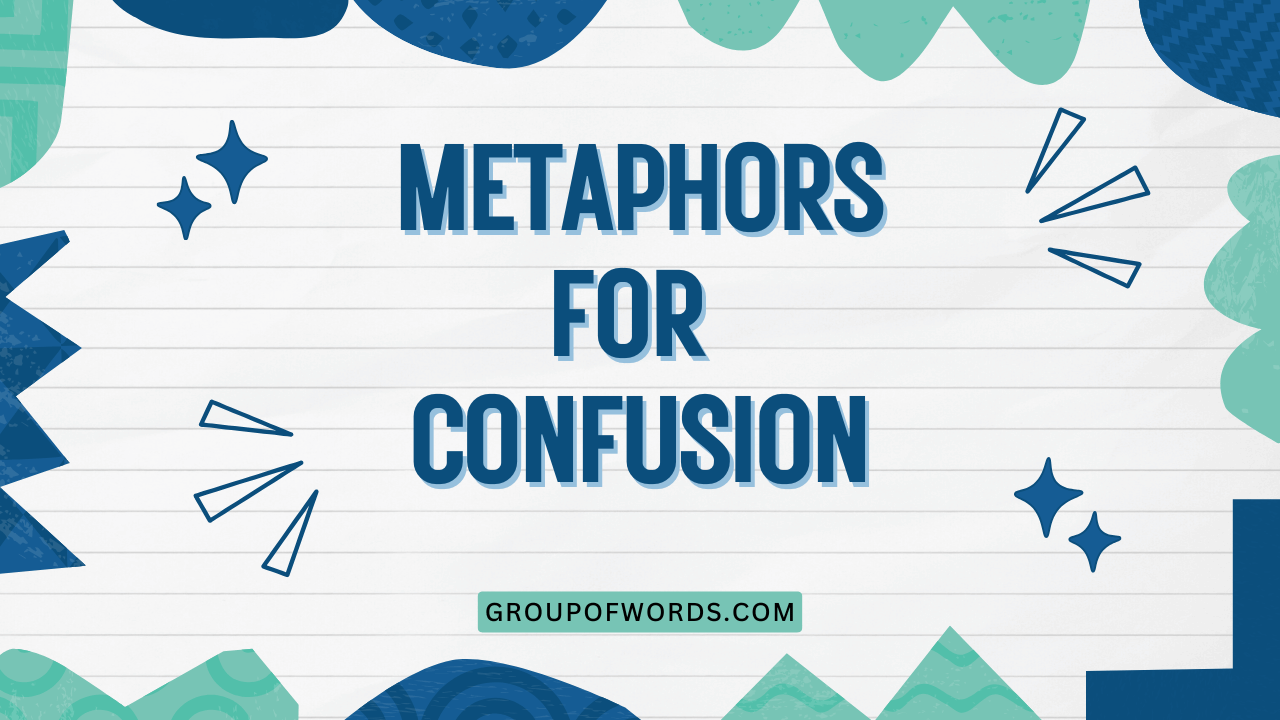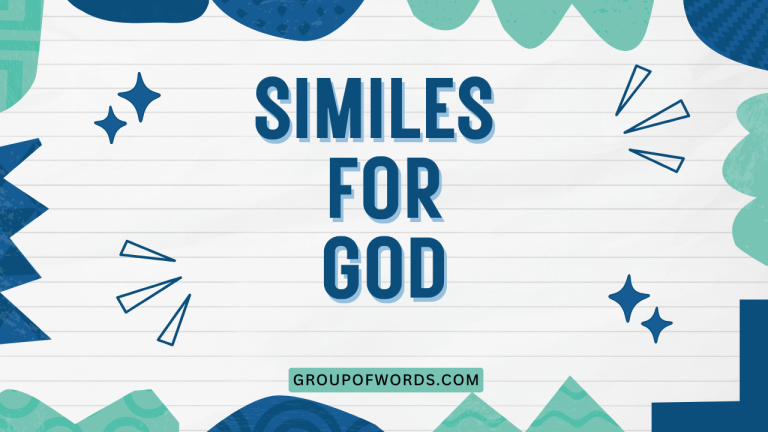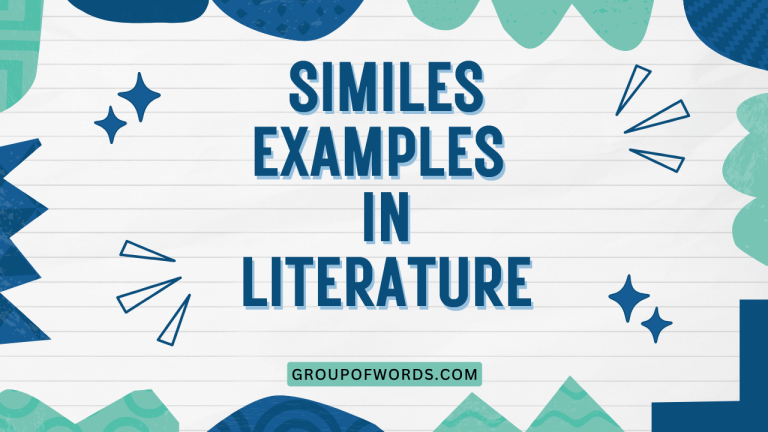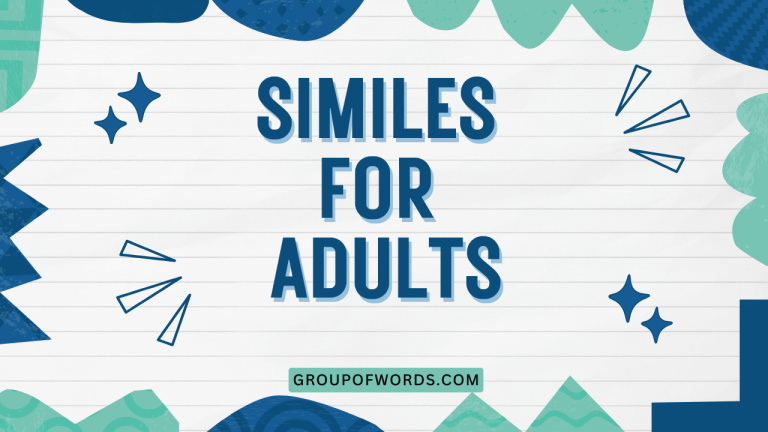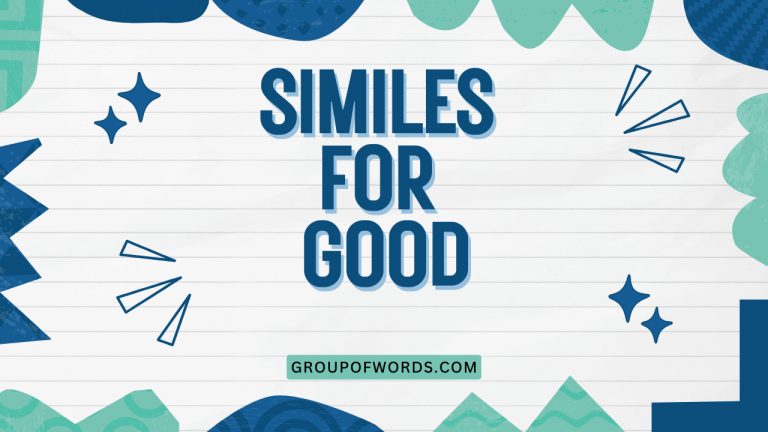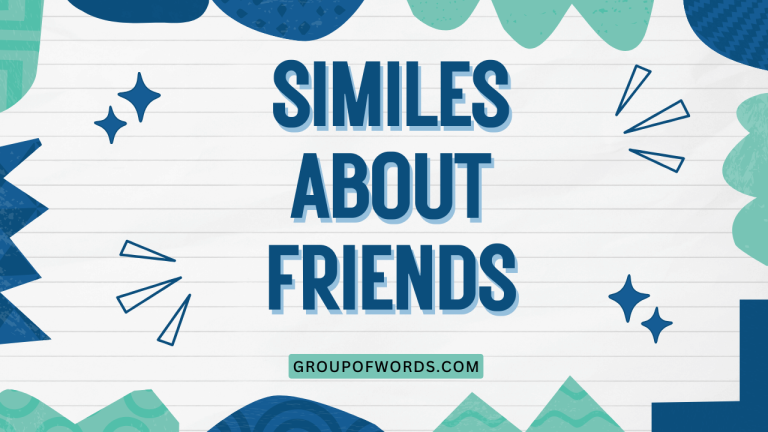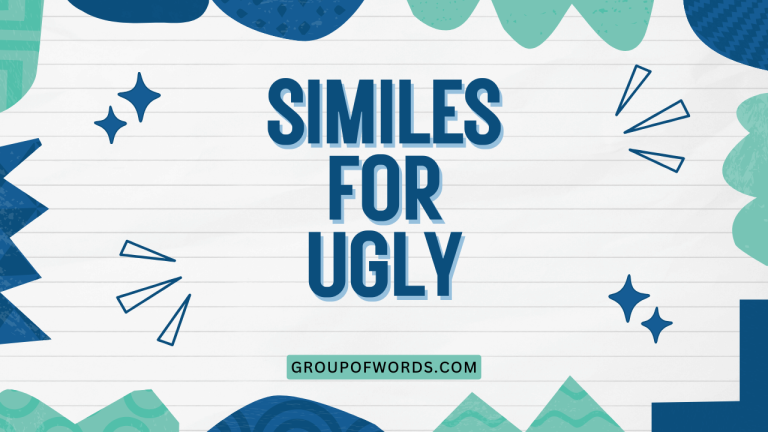Metaphors for Confusion: A Grammatical Exploration
Confusion is a universal human experience, and language offers a rich tapestry of metaphors to describe this state. Understanding these metaphors not only enhances our comprehension of English but also deepens our appreciation for the nuances of expression.
This article explores the grammatical structures and diverse forms of metaphors used to convey confusion, providing a comprehensive guide for English language learners and enthusiasts alike. Whether you’re a student, a teacher, or simply someone fascinated by language, this exploration will illuminate the ways in which we use figurative language to articulate mental disorientation.
Table of Contents
- Introduction
- Definition of Metaphors for Confusion
- Structural Breakdown
- Types and Categories of Confusion Metaphors
- Examples of Metaphors for Confusion
- Usage Rules and Guidelines
- Common Mistakes
- Practice Exercises
- Advanced Topics
- Frequently Asked Questions
- Conclusion
Definition of Metaphors for Confusion
Metaphors for confusion are figures of speech that use an image, idea, or concept from one domain to describe the feeling or state of being confused. These metaphors don’t literally mean that someone is lost in a maze or shrouded in darkness; rather, they create a vivid and relatable representation of mental disorientation.
They serve to make the abstract concept of confusion more concrete and understandable. The function of these metaphors is primarily communicative, allowing individuals to effectively express their internal experience to others.
These metaphors are crucial in everyday language, literature, and even scientific discourse when describing complex or poorly understood phenomena.
These metaphors often rely on shared cultural understandings and experiences. For instance, the metaphor of being “in a fog” to describe confusion draws on the common experience of physical fog obscuring vision, thus mirroring the obscuring of mental clarity.
The classification of these metaphors falls under the broader category of conceptual metaphors, which are pervasive in human thought and language. Conceptual metaphors structure our understanding of abstract concepts like confusion by mapping them onto more concrete domains.
Structural Breakdown
The structure of metaphors for confusion typically involves two key elements: the target domain (confusion) and the source domain (the concrete image or concept used to describe confusion). The metaphor operates by identifying similarities between these two domains. For example, in the metaphor “I’m lost,” the target domain is the speaker’s feeling of confusion, and the source domain is the physical experience of being lost in a particular place. The structure is usually implicit, rather than explicitly stated. One doesn’t say, “Confusion is like being lost”; instead, one directly states, “I’m lost,” implying the comparison.
The grammatical structure can vary. It can be a simple statement (e.g., “I’m in a haze”), a question (e.g., “Am I dreaming?”), or even an exclamation (e.g., “This is a labyrinth!”).
The verb ‘to be’ is frequently used to equate the feeling of confusion with the source domain. Adjectives (e.g., “muddled,” “disoriented”) and adverbs (e.g., “vaguely,” “aimlessly”) also play significant roles in modifying the description of confusion.
The effectiveness of a metaphor lies in its ability to resonate with the listener or reader, creating a shared understanding of the feeling being conveyed.
Types and Categories of Confusion Metaphors
Metaphors for confusion can be categorized based on the source domain they draw upon. Here are some common categories:
Spatial Metaphors
These metaphors use spatial concepts, such as being lost or disoriented in a physical space, to represent mental confusion. They often involve prepositions like “in,” “out of,” “around,” and “through.” The idea is that confusion feels like being physically lost or unable to navigate a space effectively.
Container Metaphors
These metaphors treat the mind as a container, and confusion is represented as something filling or disrupting the contents of that container. Examples include “my head is swimming” or “my mind is a mess.” The feeling is that one’s thoughts are jumbled and disorganized within the confines of one’s own mind.
Light and Darkness Metaphors
These metaphors associate clarity with light and confusion with darkness. Expressions like “I’m in the dark” or “everything is hazy” evoke a sense of obscured understanding.
The idea is that confusion prevents one from seeing things clearly, just as darkness obscures physical vision.
Physical Impediment Metaphors
These metaphors compare confusion to physical obstacles or impediments that prevent movement or progress. Examples include “I’m stuck” or “I’m hitting a wall.” The feeling is that confusion is blocking one’s ability to think clearly or make progress towards a goal.
Machine Malfunction Metaphors
These metaphors depict the mind as a machine that is not functioning correctly. Examples include “my brain is short-circuiting” or “my gears are grinding.” The idea is that confusion causes the mental processes to break down or operate inefficiently.
Examples of Metaphors for Confusion
The following tables provide examples of metaphors for confusion, categorized by type. Each example illustrates how a concrete concept is used to represent the abstract feeling of confusion.
Spatial Metaphor Examples
The following table provides a comprehensive list of spatial metaphors used to describe confusion. These metaphors often involve a sense of being lost or disoriented.
| Metaphor | Explanation |
|---|---|
| I’m lost. | Feeling disoriented and unsure of what to do. |
| I’m going around in circles. | Repeating the same thought process without making progress. |
| I’m all over the place. | Lacking focus and scattered in thought. |
| I’m in a maze. | Feeling trapped and unable to find a solution. |
| I’m off track. | Having deviated from the correct path of thinking. |
| I’m out of my depth. | Facing a situation that is too complex to understand. |
| I’m adrift. | Lacking direction and purpose in thought. |
| I’m disoriented. | Feeling confused about one’s surroundings and situation. |
| I’ve lost my bearings. | Unable to determine one’s position or direction. |
| I’m in unfamiliar territory. | Encountering new and confusing information. |
| I’m navigating uncharted waters. | Dealing with a situation that lacks clear guidelines. |
| I’m wandering aimlessly. | Thinking without a clear goal or direction. |
| I’m going nowhere. | Making no progress in understanding. |
| I’m stuck in a rut. | Repeating the same unproductive thought patterns. |
| I’m trapped in a loop. | Unable to escape a cycle of confusing thoughts. |
| I’m far removed from the topic. | Feeling disconnected and unable to understand. |
| I’m distanced from the core issue. | Unable to grasp the central point of confusion. |
| I’m detouring from the main concept. | Getting sidetracked by irrelevant thoughts. |
| I’m far afield. | Straying far from the relevant topic or information. |
| I’m in a different dimension. | Experiencing a state of profound confusion. |
| I’m in the weeds. | Lost in the details and unable to see the bigger picture. |
| I’m buried in minutiae. | Overwhelmed by insignificant details. |
| I’m swamped with details. | Overcome by a large amount of information. |
| I’m drowning in information. | Feeling overwhelmed and unable to process data. |
Container Metaphor Examples
The following table presents examples of container metaphors, where the mind is likened to a container filled with confusing thoughts or ideas.
| Metaphor | Explanation |
|---|---|
| My head is swimming. | Feeling dizzy and confused. |
| My mind is a mess. | Thoughts are disorganized and chaotic. |
| My brain is overflowing. | Feeling overwhelmed with too much information. |
| My head is full of fog. | Thinking unclearly and vaguely. |
| My mind is cluttered. | Thoughts are disorganized and distracting. |
| My thoughts are jumbled. | Ideas are mixed up and incoherent. |
| My mind is a whirlwind. | Thoughts are spinning rapidly and uncontrollably. |
| My brain is scrambled. | Thinking in a disorganized and incoherent way. |
| My head is spinning. | Feeling overwhelmed and unable to focus. |
| My mind is in turmoil. | Experiencing a state of inner chaos and confusion. |
| My thoughts are bottled up. | Unable to express or process one’s thoughts effectively. |
| My mind is a pressure cooker. | Feeling intense mental strain and confusion. |
| My brain is a black box. | Unable to understand one’s own thought processes. |
| My mind is hazy. | Thinking unclearly and vaguely. |
| My thoughts are muddled. | Ideas are confused and indistinct. |
| My head is in a fog bank. | Experiencing prolonged and intense mental confusion. |
| My mind is a tangled web. | Thoughts are intricately intertwined and confusing. |
| My thoughts are a mixed bag. | Thoughts are a combination of clear and unclear ideas. |
| My head is stuffed with ideas. | Feeling overwhelmed with too many thoughts. |
| My brain is a sieve. | Unable to retain information effectively. |
| My mind is a junk drawer. | Thoughts are disorganized and cluttered. |
| My head is a beehive. | Thoughts are buzzing and chaotic. |
| My thoughts are a jumbled mess. | Ideas are completely disorganized and incoherent. |
| My brain is a washing machine. | Thoughts are spinning and churning uncontrollably. |
Light and Darkness Metaphor Examples
This table presents metaphors that equate confusion with darkness and clarity with light.
| Metaphor | Explanation |
|---|---|
| I’m in the dark. | Lacking knowledge or understanding. |
| Everything is hazy. | Things are unclear and indistinct. |
| I can’t see clearly. | Unable to understand the situation. |
| I’m lost in the shadows. | Feeling confused and uncertain. |
| The situation is murky. | Things are unclear and difficult to understand. |
| I’m groping in the dark. | Trying to understand without clear guidance. |
| The answer is shrouded in mystery. | The solution is hidden and difficult to find. |
| Everything is clouded. | Things are obscured and difficult to perceive. |
| I’m in a fog. | Feeling confused and disoriented. |
| The truth is obscured. | The reality is hidden or unclear. |
| I’m blinded by the details. | Overwhelmed by information and unable to see the bigger picture. |
| The path is unclear. | The way forward is uncertain and confusing. |
| I’m stumbling in the darkness. | Trying to understand without clear direction. |
| I can’t make heads or tails of it. | Unable to understand something at all. |
| The situation is opaque. | Things are difficult to see through or understand. |
| I’m navigating through shadows. | Dealing with uncertainty and confusion. |
| The issue is blurred. | The details are indistinct and unclear. |
| I’m in a twilight zone. | Experiencing a state of surreal confusion. |
| The solution is hidden in plain sight. | The answer is obvious but overlooked. |
| I’m searching for the light. | Seeking clarity and understanding. |
| Things are in a grey area. | The situation is ambiguous and unclear. |
| I’m in a dark place mentally. | Experiencing a state of profound confusion and despair. |
| The answer is veiled. | The solution is hidden or disguised. |
Physical Impediment Metaphor Examples
The table below illustrates metaphors that compare confusion to physical obstacles or impediments.
| Metaphor | Explanation |
|---|---|
| I’m stuck. | Unable to move forward or make progress. |
| I’m hitting a wall. | Encountering an obstacle that prevents progress. |
| I’m facing a roadblock. | Encountering a significant obstacle. |
| I’m up against a barrier. | Facing an impediment that blocks progress. |
| I’m running into obstacles. | Encountering challenges that hinder understanding. |
| I’m tripping over myself. | Making mistakes due to confusion. |
| I’m stumbling. | Making errors due to uncertainty. |
| I’m wading through mud. | Dealing with a difficult and confusing situation. |
| I’m bogged down. | Stuck in a difficult or confusing situation. |
| I’m trapped. | Unable to escape a confusing situation. |
| I’m caught in a web. | Entangled in a confusing situation. |
| I’m ensnared. | Caught in a trap or difficult situation. |
| I’m wading through treacle. | Dealing with something excessively slow and difficult. |
| I’m climbing a mountain. | Facing a daunting and challenging task. |
| I’m swimming upstream. | Struggling against opposition or difficulty. |
| I’m pushing against the tide. | Resisting a strong force or trend. |
| I’m fighting an uphill battle. | Facing a difficult and challenging struggle. |
| I’m walking through quicksand. | Dealing with a situation that is increasingly difficult. |
| I’m lost in the undergrowth. | Confused by the complexity of the situation. |
| I’m struggling to stay afloat. | Barely managing to cope with a difficult situation. |
Machine Malfunction Metaphor Examples
The following table provides examples of metaphors that compare confusion to a machine malfunctioning.
| Metaphor | Explanation |
|---|---|
| My brain is short-circuiting. | Unable to process information effectively. |
| My gears are grinding. | Thinking is slow and difficult. |
| My mind is blanking out. | Unable to recall information or think clearly. |
| My circuits are fried. | Overwhelmed and unable to function mentally. |
| My system is crashing. | Experiencing a mental breakdown. |
| My hard drive is full. | Feeling overwhelmed with too much information. |
| My processor is overloaded. | Unable to process information efficiently. |
| My memory is failing. | Unable to recall information accurately. |
| My wires are crossed. | Thoughts are confused and disorganized. |
| My engine is sputtering. | Thinking is erratic and unreliable. |
| My mental clock is ticking backwards. | Feeling as though cognitive functions are deteriorating. |
| My cognitive functions are glitching. | Experiencing small, temporary malfunctions in thought. |
| My thought process has stalled. | Unable to continue thinking clearly or making progress. |
| My mental machinery is malfunctioning. | General sense that cognitive processes are not working correctly. |
| My brain is buffering. | Experiencing a delay in processing information. |
| I’m running on fumes mentally. | Operating with very little cognitive energy or clarity. |
| I’ve lost my mental connection. | Feeling disconnected from one’s own thoughts and ideas. |
| My mental battery is drained. | Feeling exhausted and unable to think clearly. |
| My internal computer needs rebooting. | Feeling the need to rest and refresh the mind. |
| My mental programs are corrupted. | Feeling that one’s thought patterns are flawed or ineffective. |
Usage Rules and Guidelines
When using metaphors for confusion, it’s important to consider the context and audience. The metaphor should be appropriate for the situation and easily understood by the listener or reader.
Avoid using clichés or overused metaphors, as they can lose their impact. Instead, strive for originality and creativity in your metaphorical expressions.
Ensure that the metaphor aligns with the feeling of confusion you are trying to convey. A poorly chosen metaphor can be confusing in itself.
Be mindful of cultural differences, as some metaphors may not translate well across different cultures. Consider the connotations of the source domain and how they might be interpreted by others.
For example, a metaphor involving darkness might have negative connotations in some cultures. Finally, use metaphors sparingly to avoid overwhelming your audience.
A well-placed metaphor can be powerful, but too many metaphors can be distracting.
Common Mistakes
One common mistake is using mixed metaphors, where two or more inconsistent metaphors are combined, creating a confusing and illogical image. Incorrect: “I’m lost in a sea of fog.” (Mixing the spatial metaphor of being lost with the container metaphor of a sea of fog.) Correct: “I’m lost in a fog.” (Spatial metaphor only.)
Another mistake is using metaphors that are too abstract or obscure. The metaphor should be relatable and easily understood. Incorrect: “My mind is a fractal singularity.” (Too abstract and technical.) Correct: “My mind is a tangled web.” (More relatable and understandable.)
A third mistake is using metaphors that are culturally insensitive or offensive. Be mindful of the connotations of the metaphor and how it might be interpreted by others. Incorrect: (Using a metaphor that relies on harmful stereotypes.) Correct: (Choosing a metaphor that is neutral and respectful.)
Overusing a single metaphor is also a common pitfall. While consistency can be effective, relying too heavily on one image can make your language monotonous. Incorrect: “I’m lost. My thoughts are lost. Everything feels lost.” Correct: “I’m lost. My thoughts are jumbled. Everything feels hazy.”
Practice Exercises
These exercises will help you practice identifying, creating, and correcting metaphors for confusion.
Exercise 1: Identifying Metaphors
Identify the metaphor for confusion in each sentence and explain its meaning.
| Question | Answer |
|---|---|
| 1. I’m drowning in information. | Metaphor: Drowning. Meaning: Feeling overwhelmed with too much information. |
| 2. My brain is short-circuiting. | Metaphor: Short-circuiting. Meaning: Unable to process information effectively. |
| 3. I’m in the dark about the situation. | Metaphor: In the dark. Meaning: Lacking knowledge or understanding. |
| 4. My thoughts are a tangled web. | Metaphor: Tangled web. Meaning: Thoughts are intricately intertwined and confusing. |
| 5. I’m hitting a wall with this problem. | Metaphor: Hitting a wall. Meaning: Encountering an obstacle that prevents progress. |
| 6. My head is swimming with ideas. | Metaphor: Head is swimming. Meaning: Feeling dizzy and overwhelmed with ideas. |
| 7. I’m lost in a sea of details. | Metaphor: Lost in a sea. Meaning: Feeling overwhelmed and disoriented by details. |
| 8. My mind is a cluttered room. | Metaphor: Cluttered room. Meaning: Thoughts are disorganized and distracting. |
| 9. I’m wandering aimlessly through the topic. | Metaphor: Wandering aimlessly. Meaning: Thinking without a clear goal or direction. |
| 10. My mental clock is ticking backwards. | Metaphor: Clock ticking backwards. Meaning: Feeling as though cognitive functions are deteriorating. |
Exercise 2: Creating Metaphors
Create a metaphor for confusion based on the given prompts.
| Prompt | Answer |
|---|---|
| 1. Imagine you are lost in a forest. | I’m lost in the woods of my own mind. |
| 2. Imagine your mind is a machine malfunctioning. | My mental machinery is grinding to a halt. |
| 3. Imagine confusion as a physical sensation. | Confusion feels like a knot tightening in my stomach. |
| 4. Imagine your thoughts as a disorganized collection of objects. | My thoughts are a jumbled pile of mismatched socks. |
| 5. Imagine clarity as a source of light. | Understanding is a flickering candle in a dark room. |
| 6. Imagine confusion as a type of weather. | I’m caught in a storm of conflicting ideas. |
| 7. Imagine your brain as a computer with too many tabs open. | My brain has too many windows open and it’s lagging. |
| 8. Imagine confusion as a form of physical restriction. | Confusion feels like being tied up in mental chains. |
| 9. Imagine your understanding as a path that disappears. | The path of understanding has vanished into thin air. |
| 10. Imagine clarity as a clear body of water. | Understanding is like seeing the bottom of a clear lake. |
Exercise 3: Correcting Misused Metaphors
Correct the misused metaphors in the following sentences.
| Question | Answer |
|---|---|
| 1. I’m lost in a sea of fog in the desert. | I’m lost in a fog. / I’m wandering in the desert, unsure of my direction. |
| 2. My brain is a tangled web of spaghetti. | My brain is a tangled web. / My thoughts are like a bowl of tangled spaghetti. |
| 3. I’m hitting a wall of darkness. | I’m in the dark. / I’m hitting a mental wall. |
| 4. My mind is swimming in a fog bank of turbulence. | My head is swimming. / I’m in a fog bank. |
| 5. I’m climbing a mountain of confusion in a maze. | I’m climbing a mountain. / I’m lost in a maze. |
| 6. My circuits are fried in a sea of information. | My circuits are fried. / I’m drowning in information. |
| 7. I’m running into obstacles of darkness. | I’m running into obstacles. / I’m in the dark. |
| 8. My thoughts are a tangled mess of quicksand. | My thoughts are a tangled mess. / I’m walking through quicksand. |
| 9. I’m lost in the undergrowth of a fog bank. | I’m lost in the undergrowth. / I’m in a fog bank. |
| 10. My mental machinery is grinding to a halt in a maze of darkness. | My mental machinery is grinding to a halt. / I’m lost in a maze. / I’m in the dark. |
Advanced Topics
At a more advanced level, exploring the philosophical underpinnings of conceptual metaphors can provide deeper insights into how we understand abstract concepts. Cognitive linguistics offers a framework for analyzing how metaphors shape our thought processes and influence our understanding of the world.
Researching the cultural variations in metaphors for confusion can reveal how different societies perceive and express this universal experience. Examining the use of metaphors in literature and rhetoric can enhance your ability to interpret and analyze complex texts.
Furthermore, delve into the neuroscience of metaphor comprehension to understand how the brain processes and interprets figurative language.
The use of extended metaphors, where a single metaphor is developed and elaborated throughout a text, can be a powerful tool for conveying complex ideas. However, it also requires careful planning and execution to avoid becoming convoluted or confusing.
Understanding the interplay between metaphor and other figures of speech, such as simile and metonymy, can further refine your ability to use language effectively. Finally, consider the ethical implications of using metaphors, particularly in persuasive communication, to ensure that you are not manipulating or misleading your audience.
Frequently Asked Questions
Here are some frequently asked questions about metaphors for confusion:
- What is the difference between a metaphor and a simile?
A metaphor directly equates two things, while a simile uses “like” or “as” to make a comparison. For example, “My mind is a maze” is a metaphor, while “My mind is like a maze” is a simile. A metaphor asserts that one thing *is* another, while a simile suggests that one thing is *similar* to another. The metaphor is generally considered to be a stronger and more direct form of comparison.
- Why are metaphors for confusion so common?
Confusion is an abstract concept that is difficult to describe directly. Metaphors provide a concrete and relatable way to express the feeling of being confused, making it easier for others to understand. By relating the abstract feeling to something tangible, such as being lost or in darkness, metaphors bridge the gap between internal experience and external communication.
- How can I improve my use of metaphors for confusion?
Read widely to expose yourself to a variety of metaphorical expressions. Pay attention to how authors and speakers use metaphors effectively. Practice creating your own metaphors by brainstorming different ways to describe the feeling of confusion. Get feedback from others on your metaphors to see if they are clear and effective.
- Are there any metaphors for confusion that should be avoided?
Avoid using clichés or overused metaphors, as they can lose their impact. Be mindful of cultural differences and avoid using metaphors that are culturally insensitive or offensive. Also, avoid using mixed metaphors, which can create a confusing and illogical image. The key is to ensure your metaphor is both original and easily understandable.
- Can metaphors for confusion be used in formal writing?
Yes, metaphors can be used in formal writing, but they should be used sparingly and with careful consideration. Choose metaphors that are appropriate for the tone and audience of your writing. Avoid using overly informal or colloquial metaphors. The goal is to enhance your writing, not to distract from it.
- How do metaphors for confusion differ across cultures?
Metaphors are often rooted in cultural experiences and understandings. A metaphor that is common in one culture may not be understood or appreciated in another. For example, a metaphor involving snow might not resonate with people who live in tropical climates. It’s important to be aware of these cultural differences when using metaphors in cross-cultural communication.
- What role do metaphors play in understanding complex topics?
Metaphors can be incredibly useful for explaining intricate or abstract concepts by relating them to more familiar ideas. This can help bridge the gap between the unknown and the known, making the new information more accessible and understandable. In the context of confusion, a well-chosen metaphor can provide a framework for grasping the underlying issues and finding a path to clarity.
- How do I avoid using mixed metaphors?
A mixed metaphor combines two or more unrelated images, resulting in a nonsensical or confusing statement. To avoid this, focus on maintaining a consistent image or concept throughout your description. Before using a metaphor, visualize it clearly in your mind to ensure it aligns with the intended meaning and doesn’t clash with other elements in your writing.
Conclusion
Metaphors for confusion provide a powerful and versatile tool for expressing the feeling of mental disorientation. By understanding the different types of metaphors, their structural elements, and usage rules, you can enhance your ability to communicate effectively and creatively.
Avoid common mistakes such as mixed metaphors and culturally insensitive expressions. Practice identifying, creating, and correcting metaphors to refine your skills.
Embrace the richness and nuance of metaphorical language to deepen your understanding of English and the human experience.
Remember that the key to using metaphors effectively is to be mindful of your audience, context, and purpose. Strive for originality,
creativity, and clarity in your metaphorical expressions.
By mastering the art of using metaphors for confusion, you can unlock new levels of expressiveness and connect with others on a deeper, more meaningful level.
